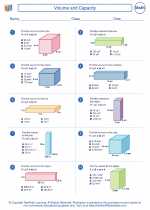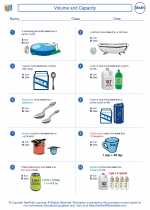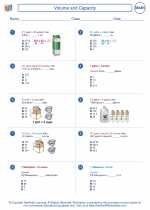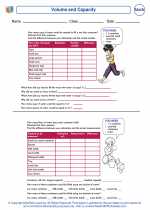Volume and Capacity
What is Volume?
Volume is the amount of space that a three-dimensional object occupies. It is measured in cubic units, such as cubic centimeters or cubic meters.
How to Calculate Volume
The formula for finding the volume of a rectangular prism is:
Volume = length × width × height
For example, if the length of a rectangular prism is 5 cm, the width is 3 cm, and the height is 2 cm, then the volume would be:
Volume = 5 cm × 3 cm × 2 cm = 30 cubic centimeters
What is Capacity?
Capacity is the measure of how much a container can hold. It is also measured in cubic units, such as liters or milliliters.
How to Calculate Capacity
The formula for finding the capacity of a container is the same as finding the volume of a rectangular prism. You multiply the length, width, and height of the container to find its capacity.
Conversion between Units
1 liter = 1000 milliliters
1 cubic meter = 1000 liters
Study Guide
- Understand the difference between volume and capacity.
- Learn to calculate volume and capacity using the appropriate formulas.
- Practice converting between different units of volume and capacity.
- Work on real-world problems involving volume and capacity, such as filling containers with liquid or comparing the sizes of different objects.
[Volume And Capacity] Related Worksheets and Study Guides:
.◂Math Worksheets and Study Guides Fifth Grade. Volume and Capacity

 Worksheet/Answer key
Worksheet/Answer key
 Worksheet/Answer key
Worksheet/Answer key
 Worksheet/Answer key
Worksheet/Answer key
 Worksheet/Answer key
Worksheet/Answer key
 Worksheet/Answer key
Worksheet/Answer key
